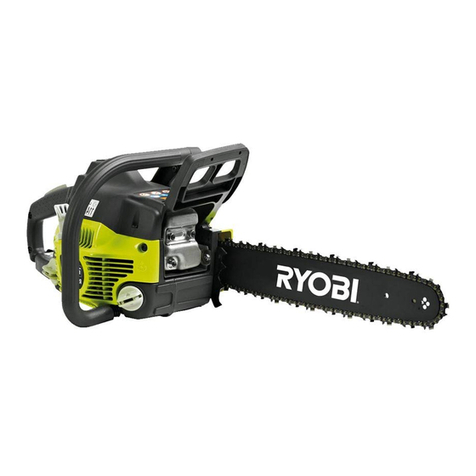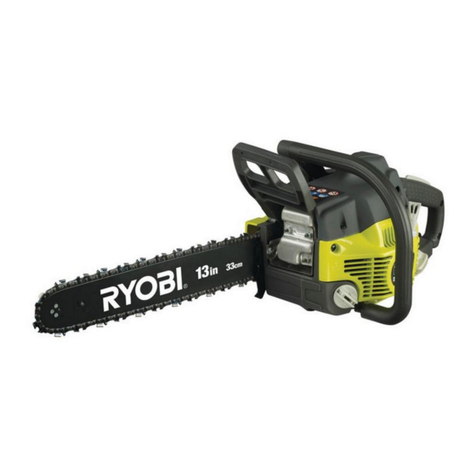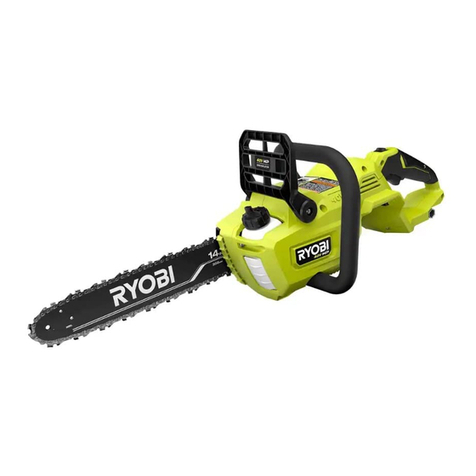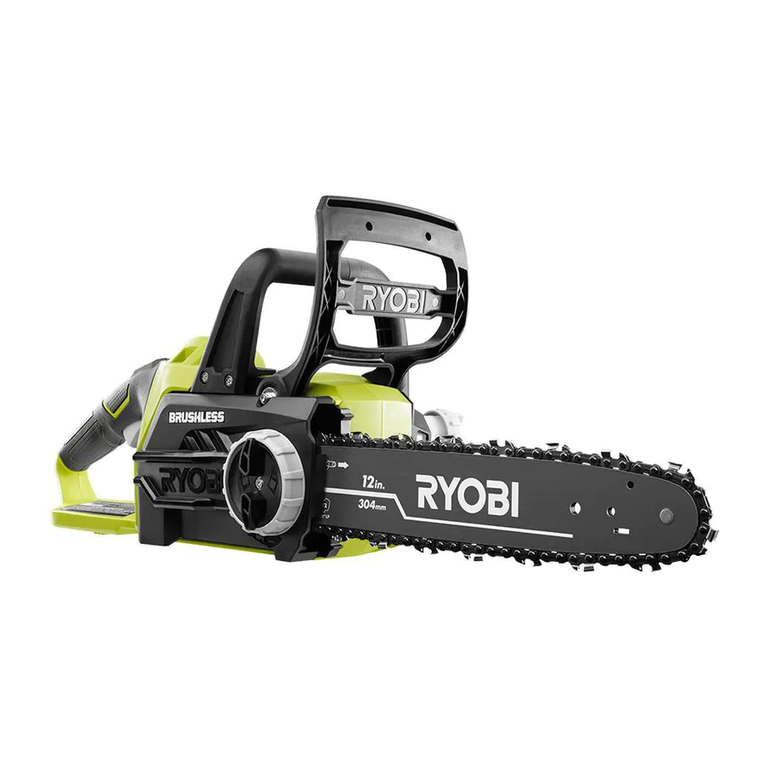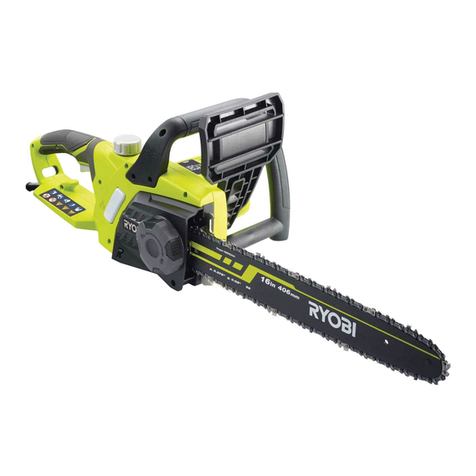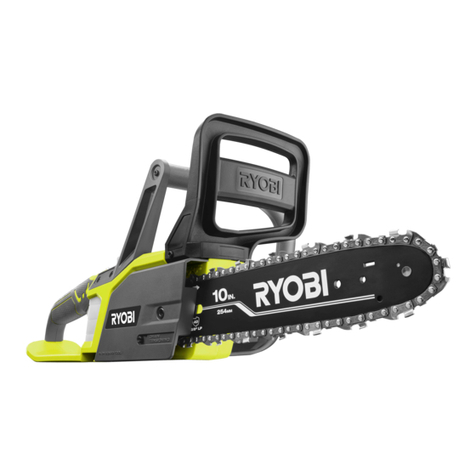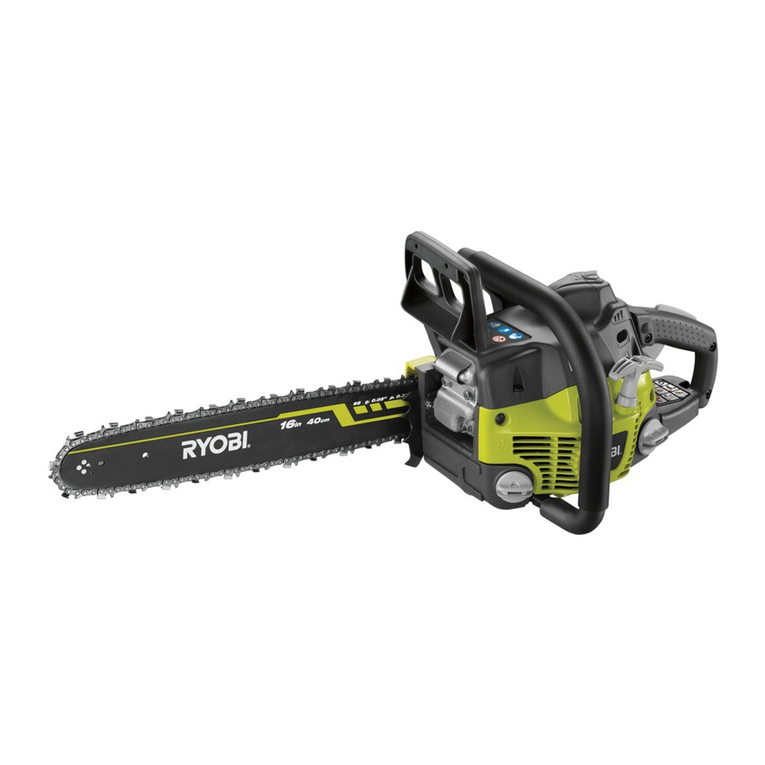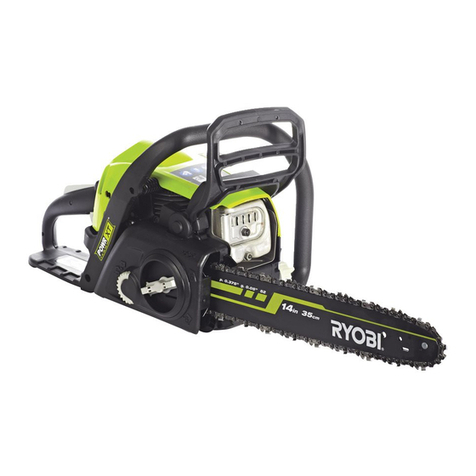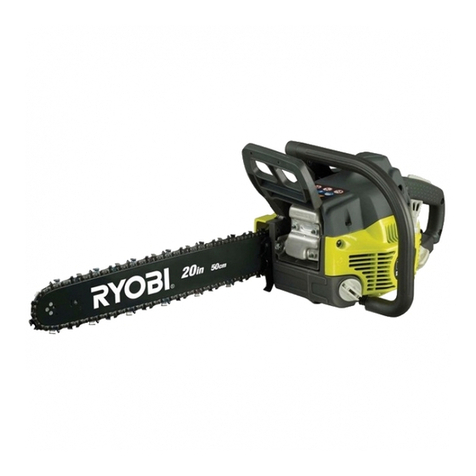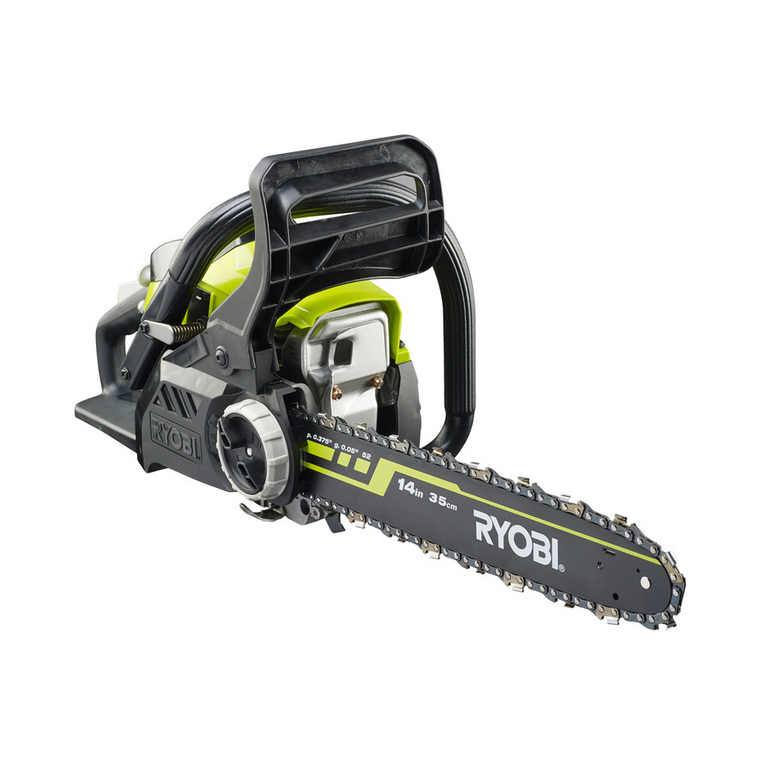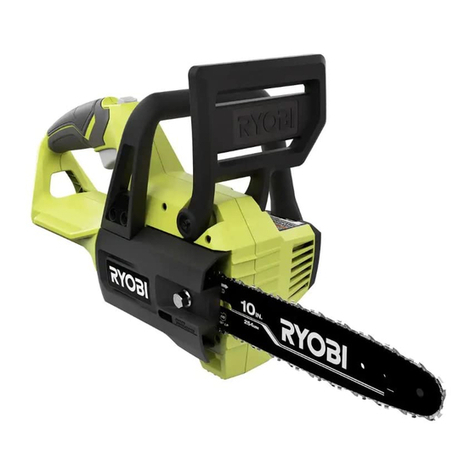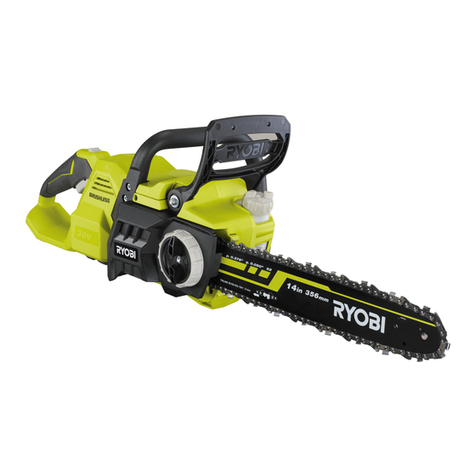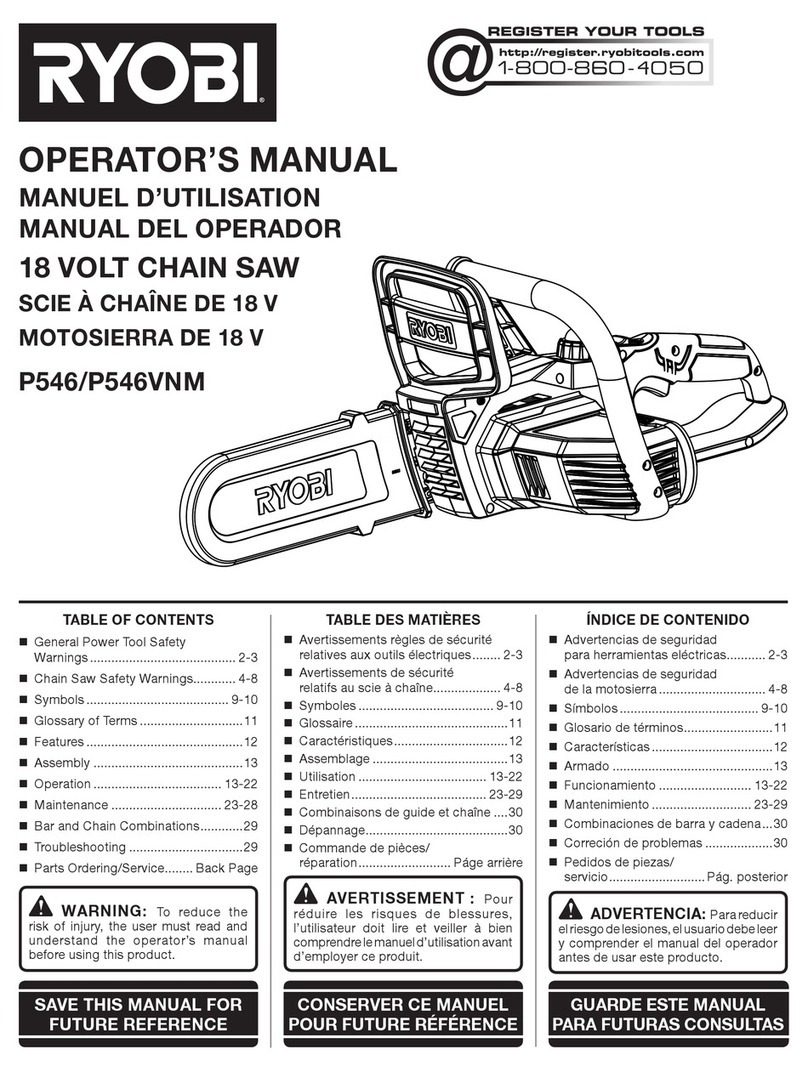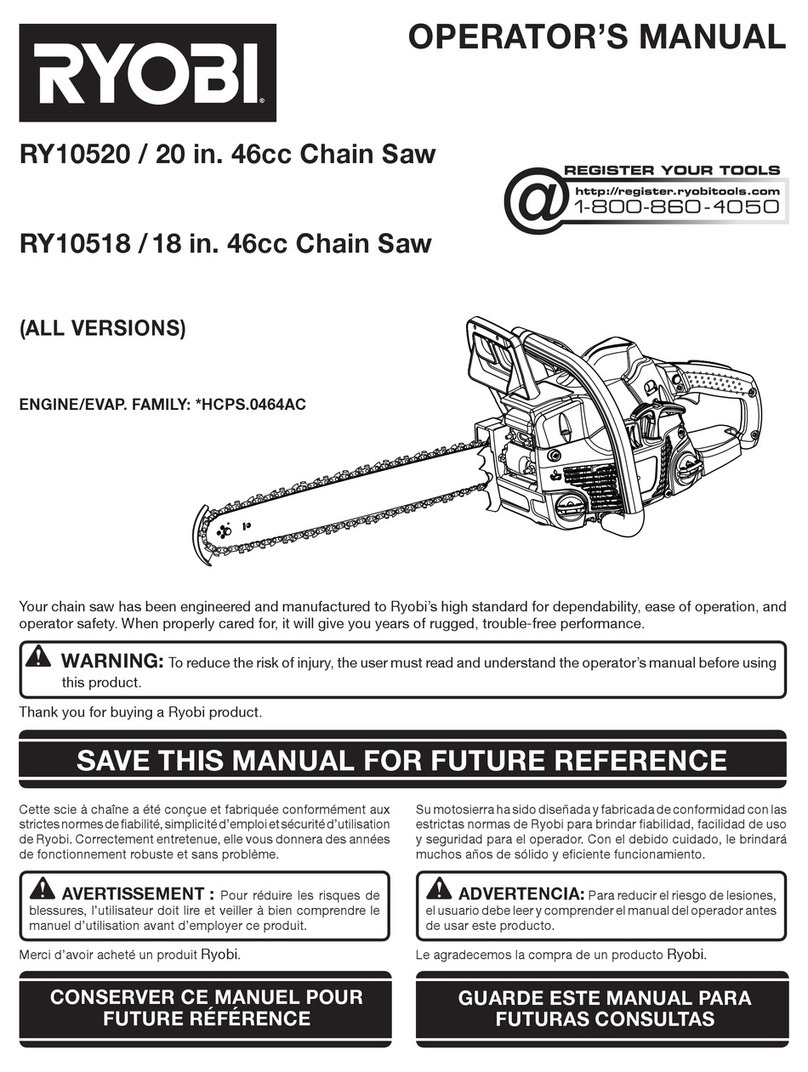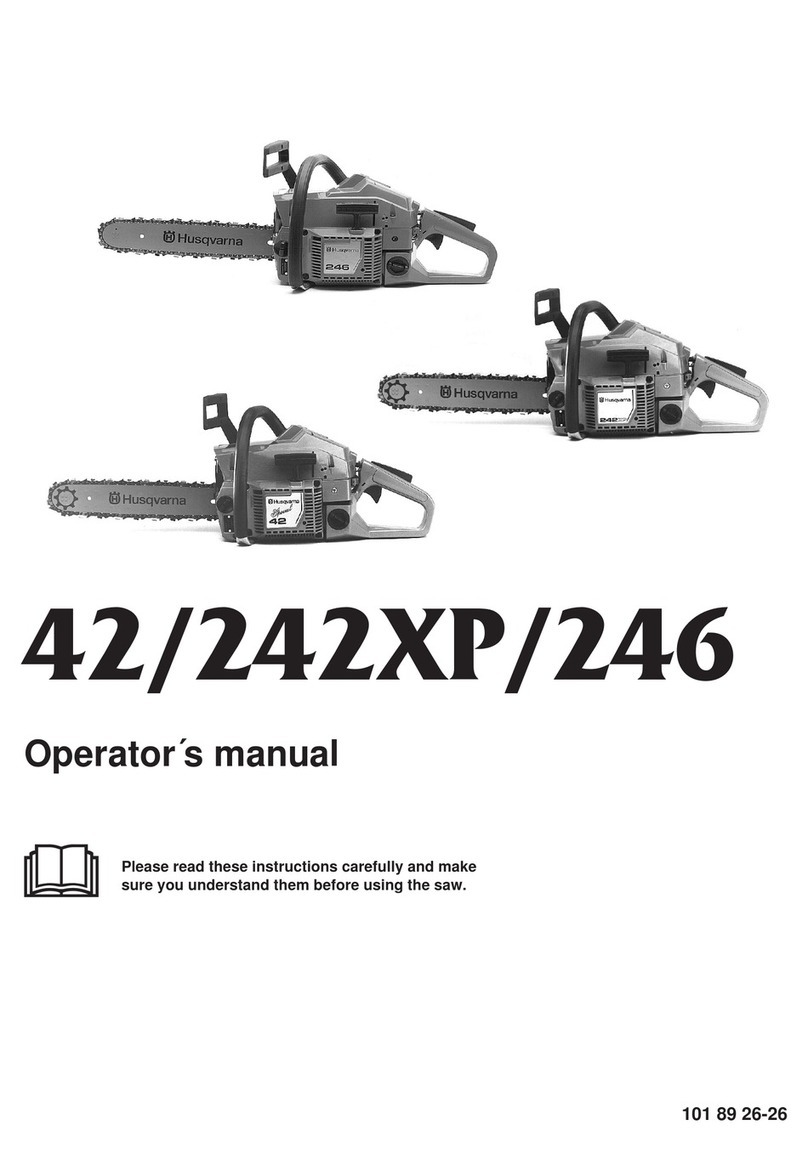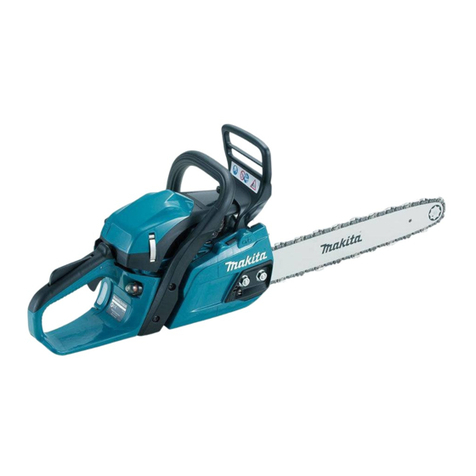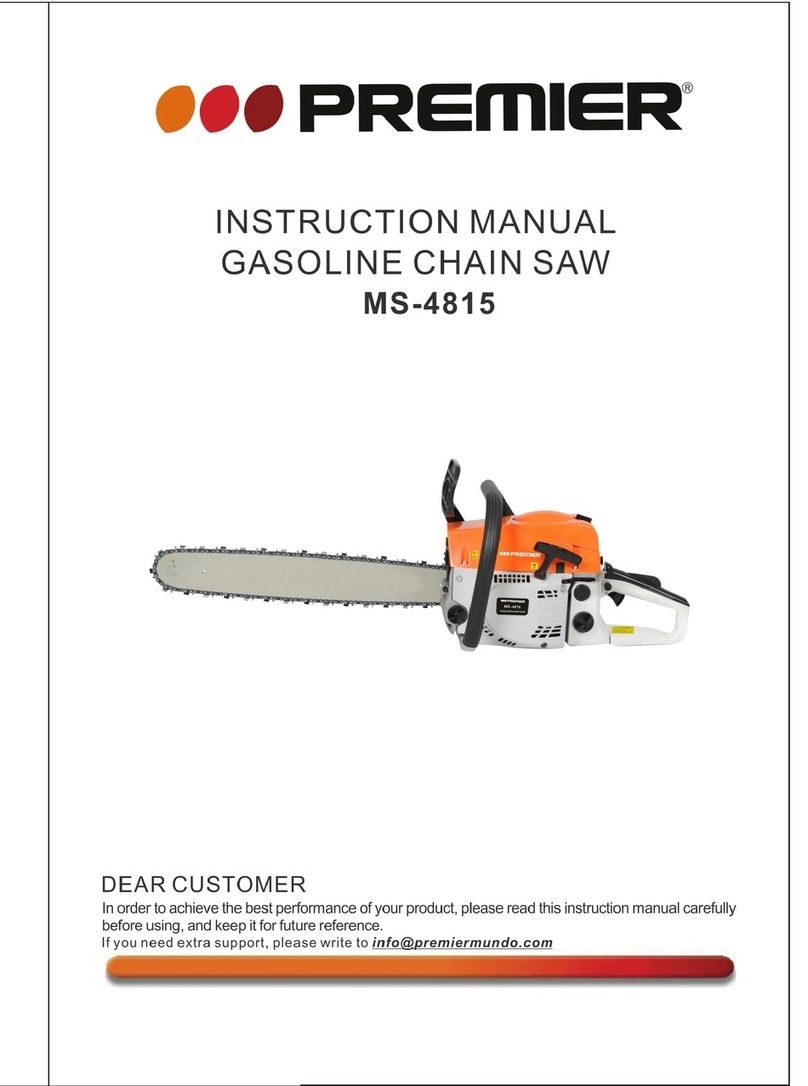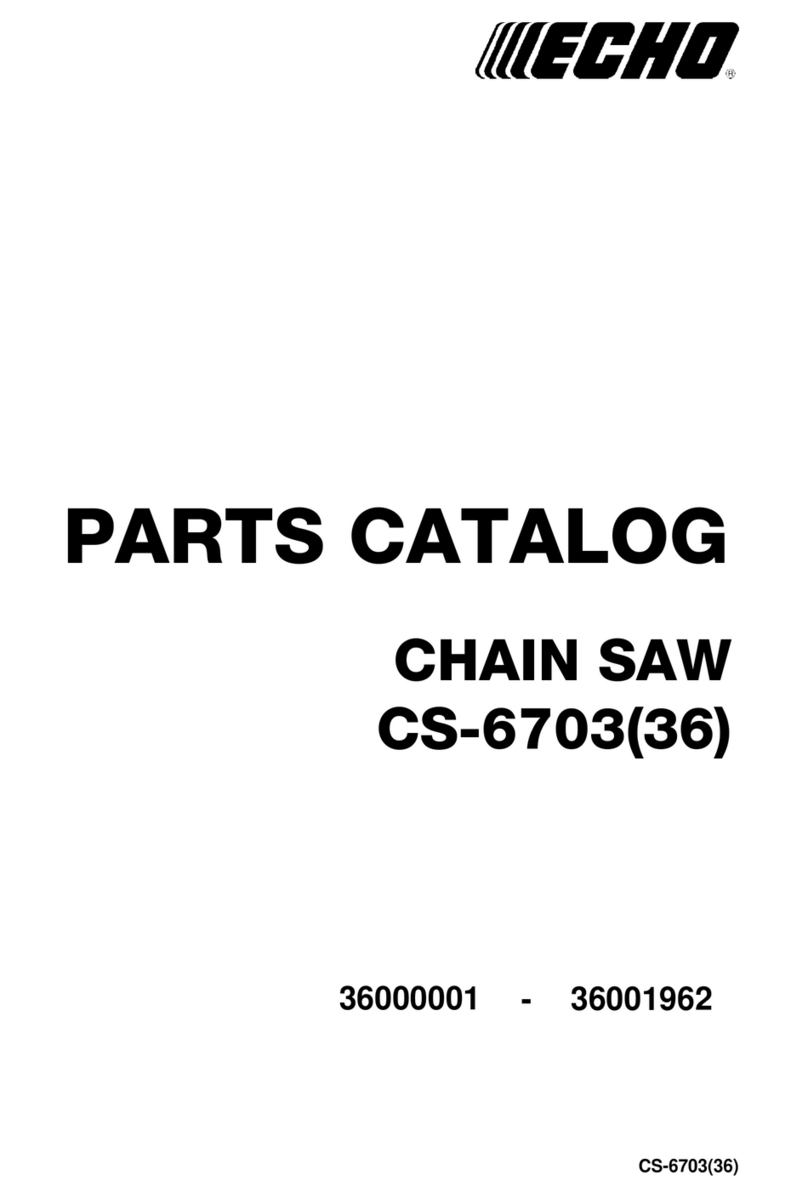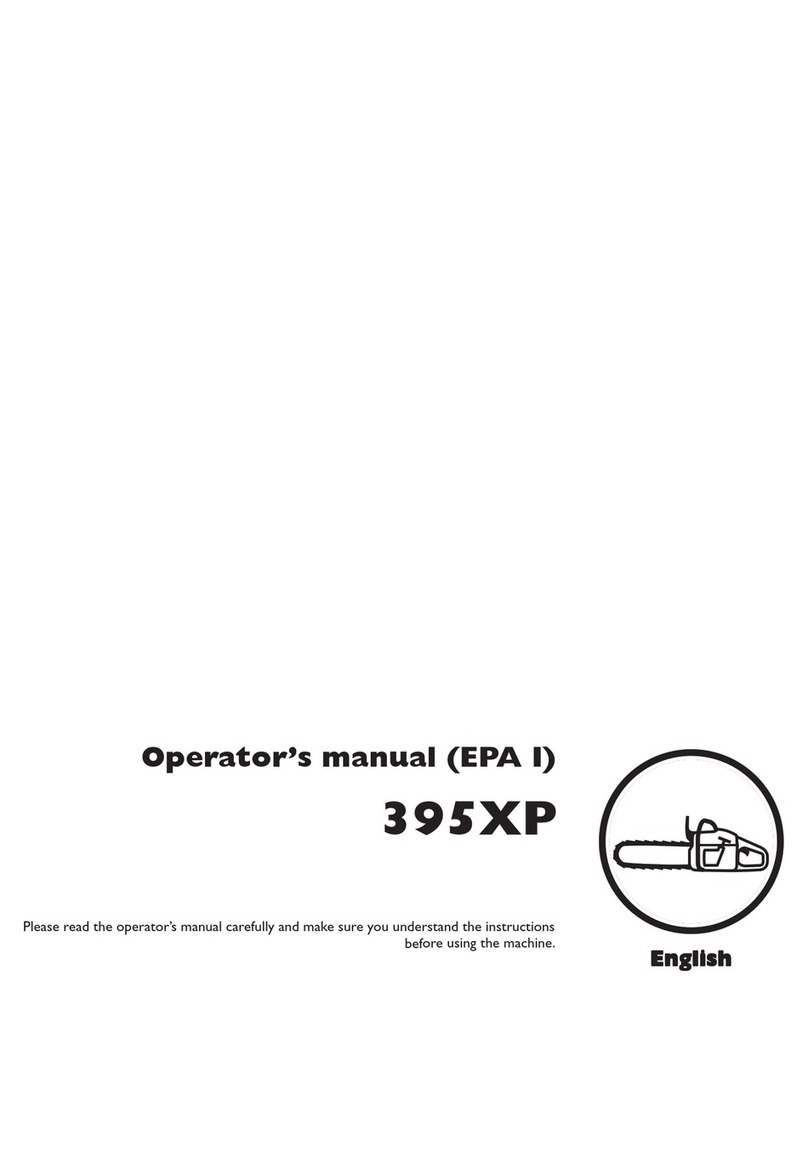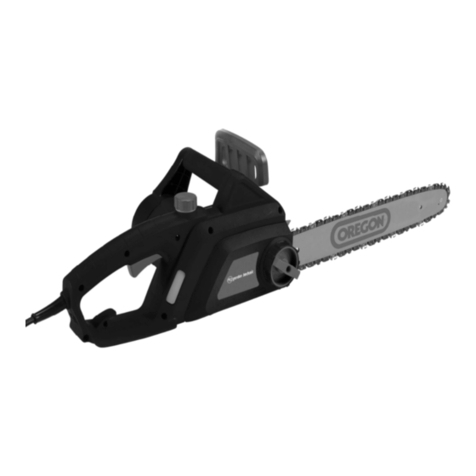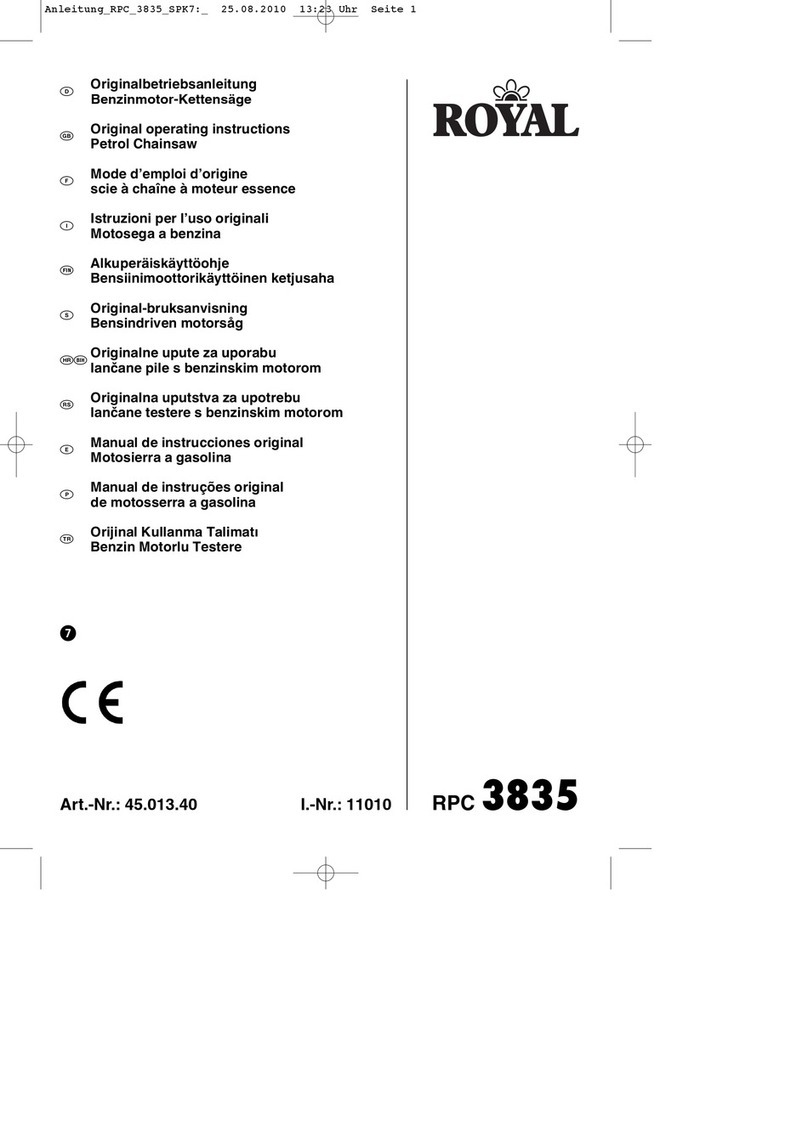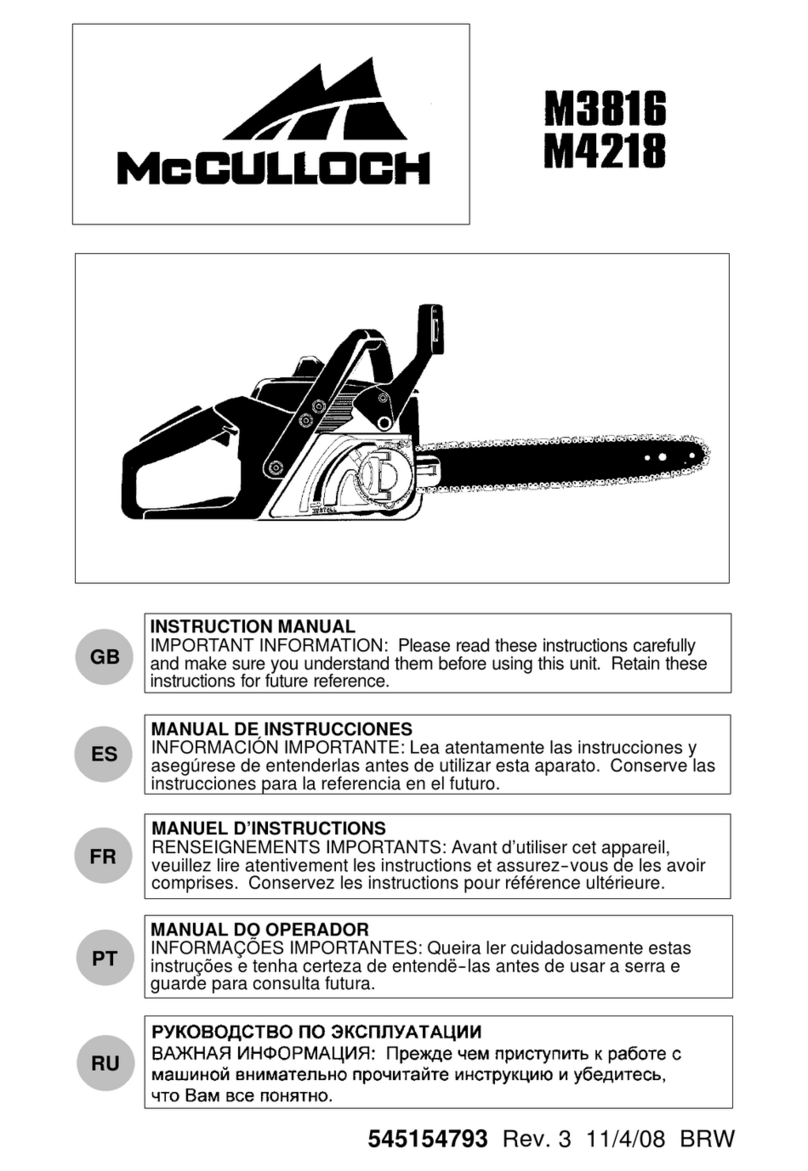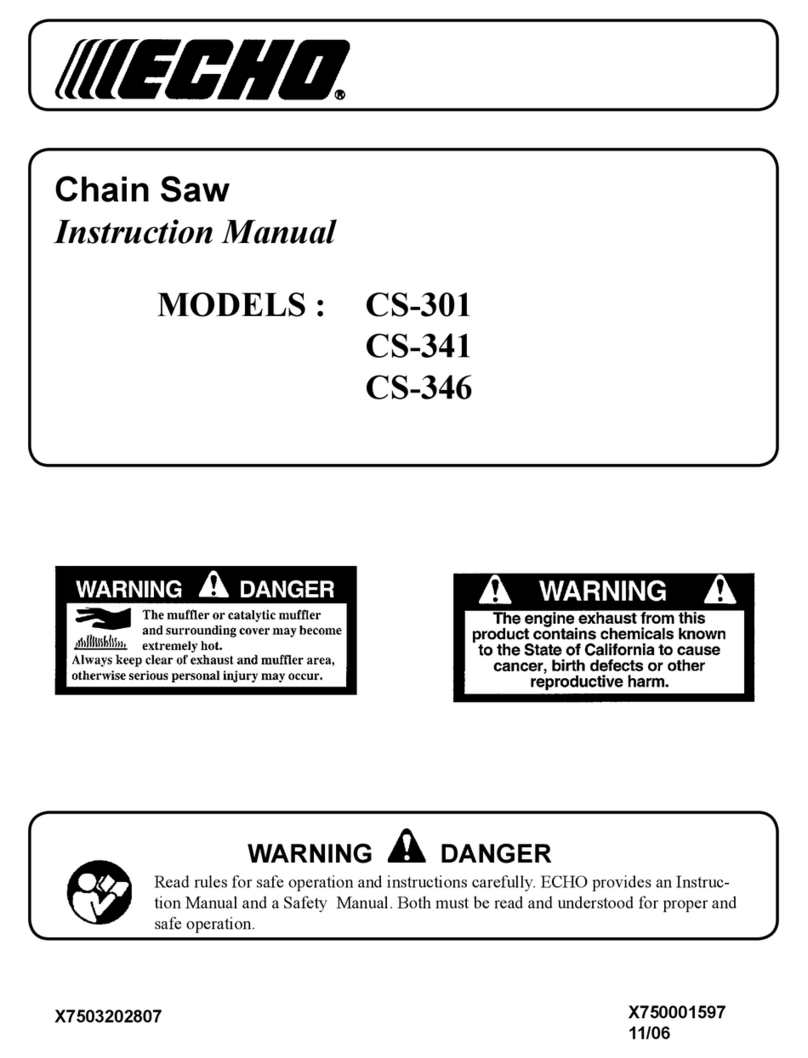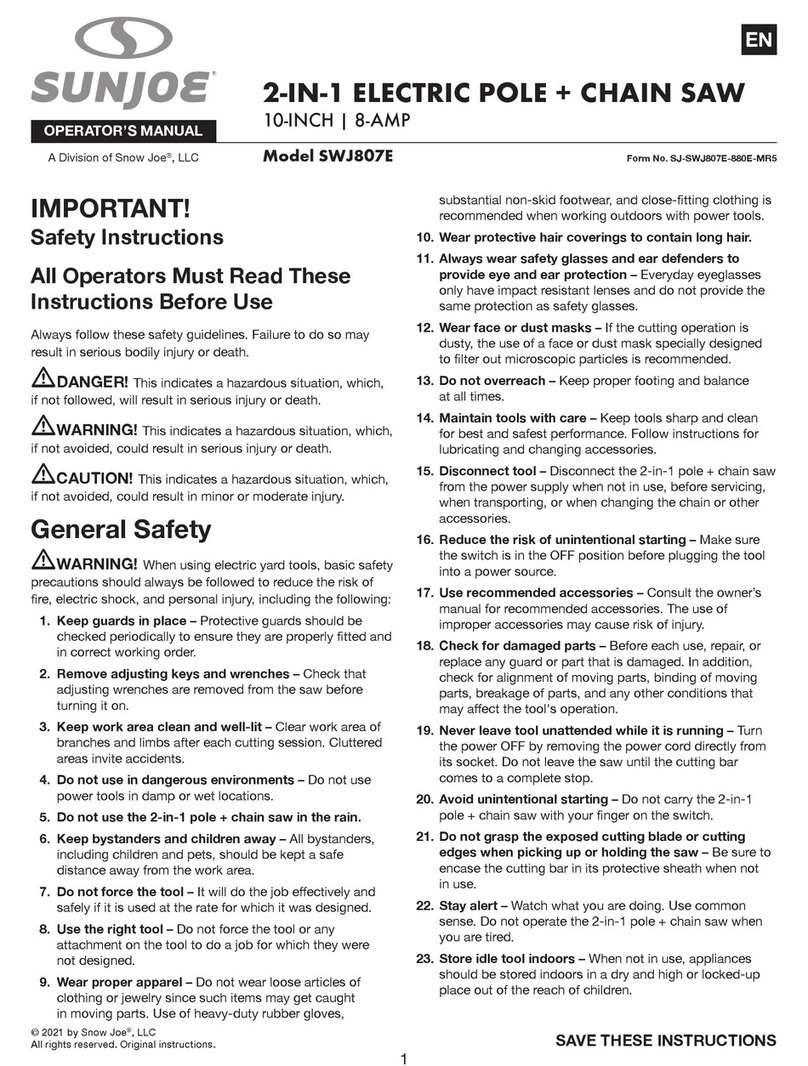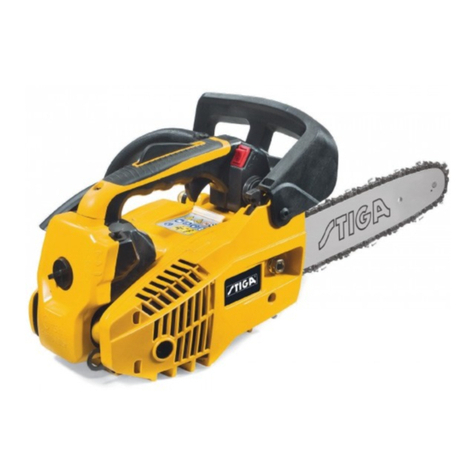2
English
RULES FOR SAFE OPERATION
■MAINTAIN TOOLS WITH CARE. Keep tools sharp
and clean for better and safer performance. Follow
instructions for lubricating and changing accessories.
■REMOVE ADJUSTING KEYS AND WRENCHES.
Form a habit of checking to see that keys and
adjusting wrenches are removed from tool before
turning it on.
■NEVER USE IN AN EXPLOSIVE ATMOSPHERE.
Normal sparking of the motor could ignite fumes.
■KEEP HANDLES DRY, CLEAN AND FREE FROM OIL
AND GREASE. Always use a clean cloth when cleaning.
Never use brake fluids, gasoline, petroleum based
products, or any strong solvents to clean your tool.
■STAY ALERT AND EXERCISE CONTROL. Watch
what you are doing and use common sense. Do not
operate tool when you are tired. Do not rush
operation of tool.
■CHECK DAMAGED PARTS. Before further use of
the tool, a guard or any other part that is damaged
should be carefully checked to determine that it will
operate properly and perform its intended function.
Check for alignment of moving parts, binding of
moving parts, breakage of parts, mounting and any
other conditions that may affect its operation. A guard
or any other part that is damaged should be properly
repaired or replaced by an authorised service centre.
■DO NOT USE TOOL IF SWITCH DOES NOT TURN
IT ON AND OFF. Have defective switches replaced
by authorised service centre.
■DO NOT OPERATE THIS TOOL WHILE UNDER
THE INFLUENCE OF DRUGS, ALCOHOL OR ANY
MEDICATION.
■THE APPLIANCE IS NOT INTENDED FOR USE BY
YOUNG OR INFIRM PERSONS WITHOUT
SUPERVISION.
■YOUNG CHILDREN SHOULD BE SUPERVISED TO
ENSURE THAT THEY DO NOT PLAY WITH THE
APPLIANCE.
■THE USE OR AN EARTH-LEAKAGE CIRCUIT-
BREAKER OF RESIDUAL CURRENT DEVICE IN
CONJUNCTION WITH THIS TOOL IS
RECOMMENDED.
CHAIN SAW SAFETY PRECAUTIONS
■Grip Saw Firmly. Hold the saw securely with both
hands while the motor is running. Use a firm grip
with your thumbs and fingers encircling the
chainsaw handles.
■Clear The Work Area. Before starting cutting
operation, ensure that you have a clear work area,
secure footing and a carefully planned path of retreat
from the falling tree.
■Stay Alert. Keep all parts of the body away from the
chain saw while the motor is running. Ensure that the
chain saw is not contacting anything before starting it.
■Carrying the saw. Before picking up the saw, ensure
that it has come to a complete stop and that your
finger is off the switch (7). Carry the saw by the front
handle (1), with the guide bar (4) and the saw chain
to the rear.
■Damaged Parts. Do not operate a chain saw that is
damaged, incorrectly adjusted, or that is not completely
and securely assembled. Check to ensure that the
chain saw stops moving when the trigger is released.
■Consider the work environment. Be extremely
cautious when cutting small saplings and brush
because the thinner material may catch on the saw
chain and can be thrown towards you or pull you off
balance. Do not operate a chain saw on a tree unless
you have received specific training in how to do so.
When cutting a limb that is under tension, watch out
for spring back so that you will not be struck when the
tension in the wood fibres is released.
■Maintain the chain saw with care. Keep the cord
clear of the chain at all time. Never carry the saw by the
cord or pull on the cord to disconnect it from the socket.
■Keep the handles dry, clean and free from oil.
When storing the saw, use a scabbard or carrying case.
■How to prevent kickback. Kickback is the upward
motion of the guide bar that occurs when the saw
chain at the nose of the guide bar contacts an object.
Kickback can lead to loss of control of the chain saw
which is extremely dangerous.
To avoid kickback:
(a) Hold the chain saw firmly with both hands.
(b) Do not overreach.
(c) Do not let the nose of the guide bar contact a log,
branch, the ground or any other obstruction.
(d) Do not cut above shoulder level.
(e) Follow the details regarding sharpening and
maintenance contained in these instructions for a
better and safer performance. Follow the instructions
for lubricating and changing the guide bar.
■Wear Gloves. Wear gloves to prevent injuries while
loading or adjusting the saw blade.
■Chain Tension. Make sure that the chain tension is
correct, as specified in these instructions. Incorrect
tension may cause the chain to disengage from the
guide bar, which is extremely dangerous.
